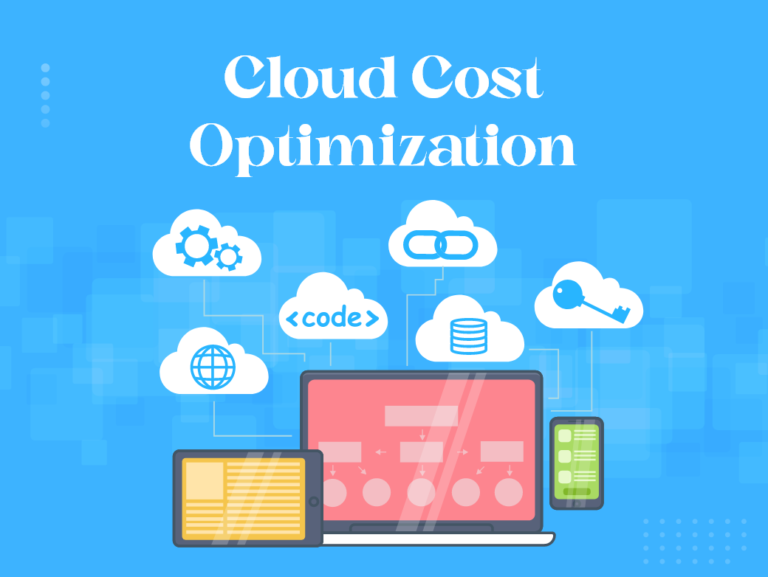Cloud cost optimization encompasses a blend of strategies, techniques, best practices, and tools aimed at minimizing cloud expenses while maximizing the business benefits derived from cloud usage.
The process involves improving the efficiency of cloud costs by identifying and reducing mismanaged or surplus resources. It also entails leveraging discounts to reserve greater capacity and aligning computing resources to specific applications and workloads within your cloud environment, ensuring optimal resource allocation.
Key Considerations
To ensure the cloud remains a cost-effective solution, seek expert guidance when planning your cloud migration. Keep the following points in mind to make informed decisions for cloud optimization
Review SLAs
When selecting a service provider for your cloud transformation, examine their service-level agreements (SLAs) and ensure they align with your internal SLAs
Seamless integration
Upgrading to new software should not necessitate a complete overhaul of your existing IT infrastructure. Verify if the new software can seamlessly complement your current setup, minimizing costs and downtime.
Evaluate scalability
Does your cloud provider offer scalability options that align with your needs? Scalability is a significant advantage of cloud adoption. Assess whether you can customize applications to accommodate demand patterns and future expansion plans.
Assess operation quality
Compare the data security and quality of cloud services with on-premise solutions. Additionally, evaluate the provider’s team structure and availability for timely assistance.
Review security policies
Data security is paramount for any organization. Thoroughly review the cloud provider’s security and privacy policies to ensure compliance with your company’s policies.
How to Optimize Cloud Cost?
Key Steps to Follow to optimizing cloud costs
Attain cost visibility
- Gain an understanding of your cloud bill and identify the specific teams, projects, or departments causing overspending.
- Make cost insights easily accessible to engineers, aligning with their experience and habits to increase cost awareness and enable better planning for new cloud initiatives.
- Keep a check on cloud budgets by monitoring daily or weekly expenses and extrapolating them to estimate monthly costs.
- Regularly monitor cloud bills to identify any anomalies or inconsistencies in expenses and take proactive action to prevent major issues.
Reduce costs through automation
- Achieving cost visibility is crucial, but manual optimization techniques like labeling and configuration can be time-consuming and difficult to scale.
- Instead, leverage automated cloud management solutions throughout the software development lifecycle, especially for running cloud-native applications.
- Automate deployments and utilize infrastructure-as-code (IaC) methods to integrate infrastructure code with the project, enabling faster development and easier maintenance.
- Implement automation in development pipelines, such as continuous integration and continuous delivery (CI/CD), to reduce errors and enhance team efficiency.
- Utilize resource auto scaling to optimize utilization and ensure availability during peak times while effectively managing costs.
By following these steps, you can gain better visibility into cloud costs, streamline your FinOps practices, and achieve significant cost savings through automation and optimization.
Best Practices of Cloud cost optimization
To ensure effective cloud operations, successful enterprises implement key practices. At AssortTech, we assign a dedicated team of Cloud Advisors to assist our clients in optimizing their cloud operating models. Our Cloud Advisor team consistently applies the following cost optimization practices, which are widely recognized and implemented.
Best Practices of Cloud cost optimization
To ensure effective cloud operations, successful enterprises implement key practices. At AssortTech, we assign a dedicated team of Cloud Advisors to assist our clients in optimizing their cloud operating models. Our Cloud Advisor team consistently applies the following cost optimization practices, which are widely recognized and implemented.
Understand usage patterns and seasonality
Gain a thorough understanding of your organization’s IT resource requirements and workload patterns. Use tools and techniques to forecast cloud spending accurately.
Right-size your services
Analyze each service and adjust their sizes to match their actual needs. Optimize server sizes, memory, databases, storage, and networking configurations.
Identify and address unused resources
Regularly scan and monitor your cloud implementations to identify and address unused, unattached, or idle resources. This includes resources created for testing purposes that are not turned off and underutilized computing power.
Monitor and correct anomalies
Utilize robust monitoring capabilities to detect anomalies and spikes in real-time. Taking corrective actions promptly can result in significant cost savings.
Leverage infrastructure automation
Embrace automation tools for continuous insights and forecasting, allowing you to right-size and tailor your cloud environments to meet minimum requirements. This is particularly useful in complex multi-cloud environments.
Choose appropriate storage solutions
Consider performance and cost requirements when selecting storage tiers. Right-size underused storage volumes and remove unattached cloud storage.
Understand the limitations of elastic solutions
Elastic load balancers, IP addresses, and block storage offers convenience and improved system performance but can be costly. Combine elastic services with accurate forecasting and right-sized service reservations for cost optimization.
Utilize reserved instances
If you anticipate long-term resource usage, consider purchasing reserved instances, which can save up to 75% compared to on-demand instances.
Consider spot instances
If your workloads can tolerate interruptions, leverage spot instances available at a significant discount compared to on-demand instances. These instances can be terminated when capacity demand increases.
Implement cost-effective storage
Evaluate different storage options based on cost and performance trade-offs, selecting the option that best suits your needs.
Cloud cost optimization Tools
Cloud cost optimization tools are essential for analyzing resource utilization, identifying cost-saving opportunities, and automating optimization strategies. When selecting the ideal tool for your requirements, consider the following options:
Native tools from public cloud providers
Public cloud providers offer built-in cost-monitoring tools that seamlessly integrate with billing data. While these tools are convenient, they may not provide a comprehensive view of real-time data when using services from multiple cloud providers. As your cloud footprint expands, consider complementing native tools with advanced services, accounts, or providers.
Custom and homegrown solutions
In some cases, building your cost optimization tool may be necessary, especially if traditional cost-monitoring platforms are not suited for managing cloud-native applications. Custom solutions can be tailored to each stakeholder involved in cloud planning, budgeting, and forecasting, including engineers, DevOps, finance, and operations teams.
Third-party cost visibility platforms
Cloud cost management platforms provided by third-party vendors offer real-time monitoring and reporting capabilities. These platforms are ideal for teams seeking a detailed view of spending based on cost allocation processes.
By carefully evaluating each tool, you can select the most suitable solution or combination of tools that align with your organization’s requirements and optimize your cloud costs effectively.
Final Thoughts on Cloud cost optimization
The cloud offers immense potential for cost savings, but it requires careful attention to cloud cost optimization. It is important to remember that cloud cost optimization is an ongoing process that involves various levers and data management.
By closely monitoring an organization’s cloud usage and expenditure, it becomes possible to prioritize actions. This includes deleting unused or forgotten resources and conducting rightsizing reviews to ensure optimal capacity utilization. It is also crucial to evaluate the tradeoffs between spending, performance, reliability, redundancy, and spare capacity, particularly for fundamental services like computing and storage. Engaging with cloud vendors for guidance, capacity reservations, and volume discounts can also contribute to cost efficiency.
Additionally, incorporating cost-efficiency considerations into the design and engineering of cloud applications, following the cloud-native philosophy, is essential. It is important to bring together the perspectives and expertise of management, finance, analytics, and engineering, with a shared objective of achieving cost efficiency.









